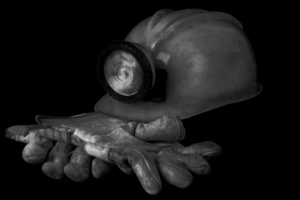 While mining injuries were down last year, mining deaths increased – especially in the metal and nonmetal sector, according to preliminary data released this week by the Mining Safety and Health Administration (MSHA).
While mining injuries were down last year, mining deaths increased – especially in the metal and nonmetal sector, according to preliminary data released this week by the Mining Safety and Health Administration (MSHA).
The data, which is available on an updated Mine Safety and Health at a Glance web page, includes information on inspections; violations; number of mines and miners; and fatality and injury rates for coal, metal and nonmetal, and all mining.
The numbers
In 2014, there were 44 mining deaths – an increase of two from the previous year. Of those deaths, 16 occurred at coal mines and 28 at metal and nonmetal mines and facilities. Recently, MSHA’s Chargeability Review Committee concluded that two metal and nonmetal mining deaths in 2014 previously not charged to the mining industry are chargeable, and they have been added to the fatality totals.
The 16 coal mining deaths in 2014 marked the lowest number ever recorded in a year and were four fewer than in 2013. The preliminary 2014 fatal injury rate was lower than in 2013, at 0.0150 fatal injuries per 200,000 hours worked and the second lowest fatal rate recorded in mining history. The overall operator-reported injury rate of 3.10 per 200,000 hours was a new record low, slightly below the 2013 rate of 3.11.
Up and down
For metal and non-metal mining, the fatal injury rate in 2014 increased to .0137 per 200,000 hours worked, up from 2013’s rate of .0108. The deaths that occurred last year mark the continuation of a trend that began in the fall of 2013. The 2014 overall operator-reported injury rate of 2.08 per 200,000 hours worked is a record low, down from the 2013 level of 2.13.
For all mining, the preliminary 2014 fatal injury rate was 0.0142 per 200,000 hours worked, an increase from the 2013 rate of 0.0132. The overall operator-reported injury rate of 2.43 per 200,000 hours was a record low.
Eleven fatalities in 2014 involved mine contractors, compared to four contractor deaths the previous year, with the highest increase in the metal and nonmetal sector.
Enforcement efforts
Overall, 121,646 citations and orders were issued in 2014, a slight increase compared to 118,279 in 2013. The increase is related to enhanced enforcement efforts aimed at addressing the increase in fatalities in the metal and nonmetal sector where citations and orders increased in 2014 by 7 percent. MSHA has implemented a number of actions to improve compliance, including special impact inspections targeting troubled mines, the revised Pattern of Violations enforcement program to rein in chronic violators, the Rules to Live By initiative designed to prevent the most common types of mining deaths, new examination rules requiring underground coal mine operators to find and fix hazards during mine examinations, and improved guidance on equipment guarding and fall protection at metal and nonmetal mines. As a result, over the past five years (2010-2014), citations and orders have declined due to improved mine industry compliance.
Two new web tools were introduced in March 2015 to improve compliance with critical safety standards. One will allow mine operators, miners, MSHA and others to monitor each mine’s compliance with Rules to Live By standards that are commonly cited following mining deaths. The second provides the same information for the nine standards commonly cited by MSHA at underground coal mines that pose hazards to miners.
The number of mines in operation decreased in 2014, from 13,761 in 2013 to 13,588. The number of working miners also declined, from 374,522 to 365,406.
MSHA will release a final version of the calendar year data in July.



